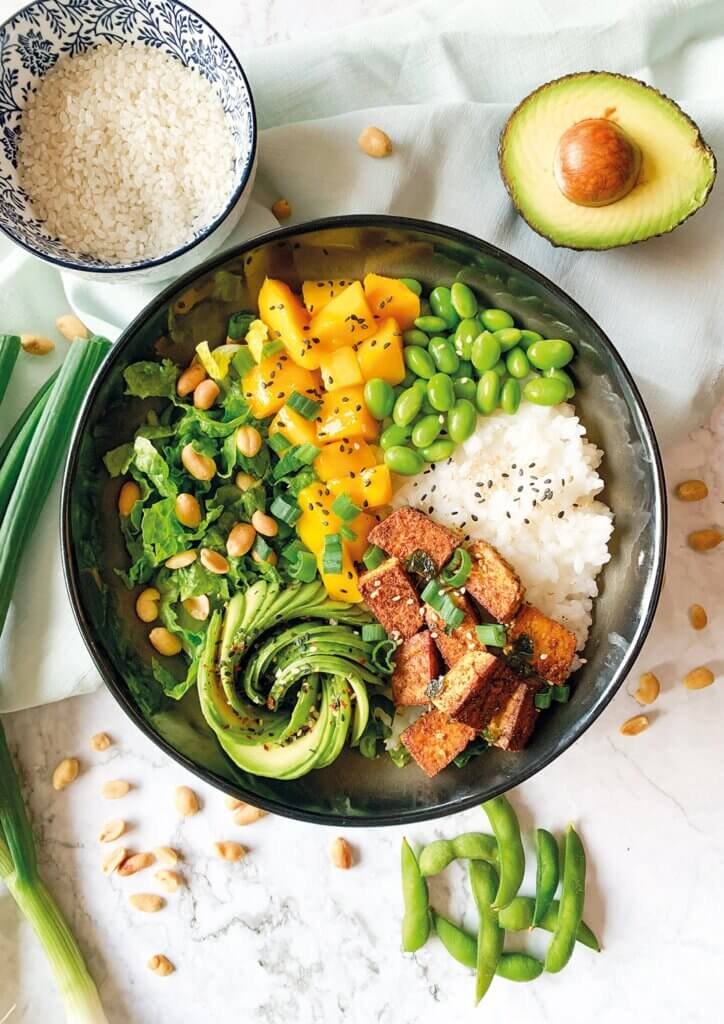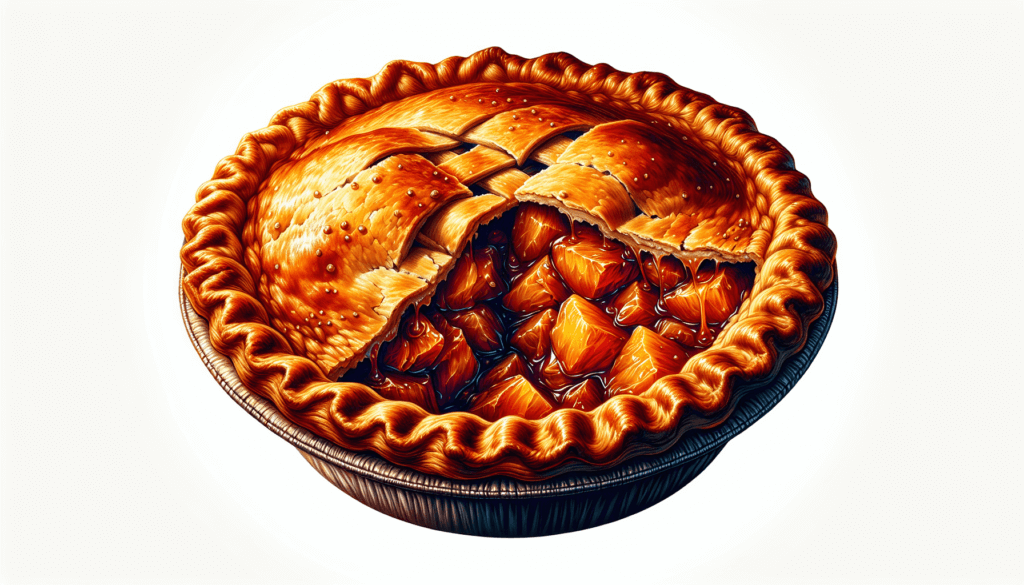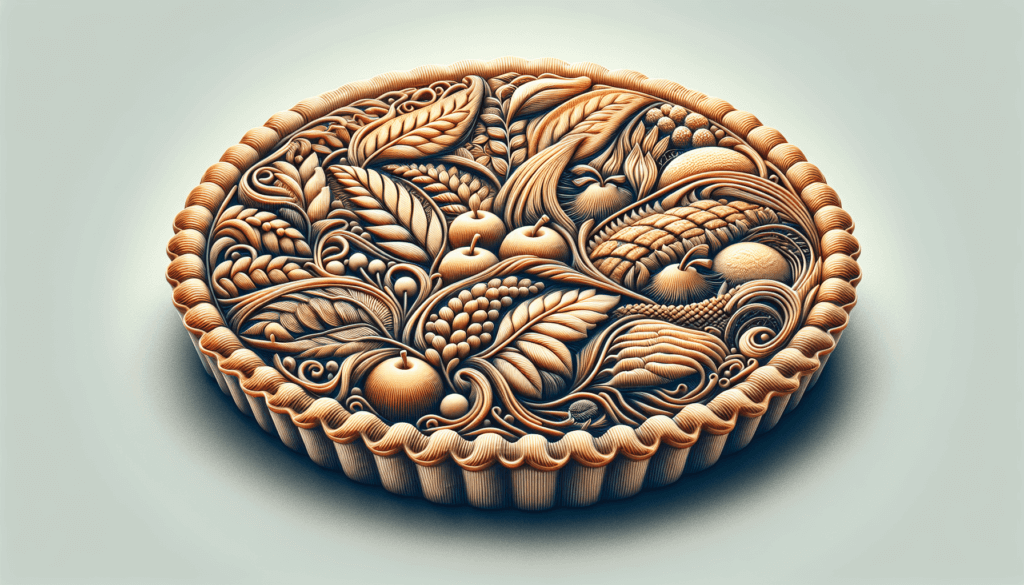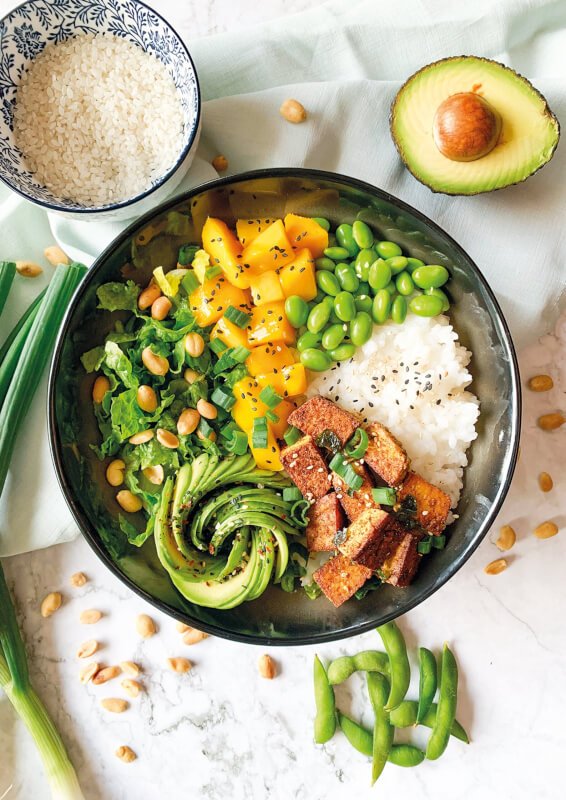Imagine the delightful aroma of freshly baked pies filling your kitchen, and the satisfaction of taking that first delicious bite. In this article, we will guide you on an exciting culinary journey, teaching you the art of making delectable sweet and savory pies from scratch. Whether you’re a seasoned baker or a novice in the kitchen, our easy-to-follow instructions and helpful tips will have you creating mouthwatering pies that will impress friends and family alike. So grab your rolling pin and get ready to uncover the secrets behind creating irresistible homemade pies that will leave everyone craving for more.

Choosing the Right Dough
When it comes to making the perfect pie, choosing the right dough is essential. There are a few types of dough to consider, each with its own unique characteristics.
Types of dough to consider
All-Butter Dough: This type of dough is made solely with butter, giving it a rich and flavorful taste. It is perfect for sweet pies, providing a flaky and tender crust that will melt in your mouth.
Shortening Dough: Shortening is a popular choice for pie crusts as it creates a very flaky and tender texture. This type of dough is ideal for savory pies, as it provides a neutral flavor that won’t overpower the filling.
Combination Dough: For those looking for the best of both worlds, a combination of butter and shortening can be used to create a dough that is both flaky and flavorful. This type of dough is versatile and can be used for both sweet and savory pies.
Tips for making the perfect pie crust
Keep your ingredients cold: When making pie dough, it is important to keep your ingredients as cold as possible. This helps to prevent the butter or shortening from melting too quickly, resulting in a flakier crust.
Don’t overwork the dough: When mixing the dough, be careful not to overmix it. Overworking the dough can lead to a tough crust. Mix the ingredients just until they come together and then stop.
Let it rest: After making the dough, it is important to let it rest in the refrigerator for at least 30 minutes. This allows the gluten to relax, resulting in a more tender crust.
Roll it out properly: When rolling out the dough, be sure to do so on a lightly floured surface. Roll from the center outwards, rotating the dough occasionally to ensure it is rolled evenly.
Sweet Pies
Sweet pies are a beloved dessert, and there are numerous classic fruit pie recipes to choose from.
Classic fruit pie recipes
Apple Pie: This timeless classic is made with crisp and tart apples, spiced with cinnamon and sugar, and baked with a flaky crust. It is best served warm with a scoop of vanilla ice cream.
Cherry Pie: Made with juicy cherries, this pie is the perfect balance of sweet and tart. It is delicious served warm or cold and is a great choice for any occasion.
Blueberry Pie: Bursting with sweet and tangy flavors, blueberry pie is a summer favorite. The combination of fresh blueberries, a hint of lemon juice, and a buttery crust make this pie a crowd-pleaser.
Delicious custard pies
If you’re in the mood for something creamy and indulgent, custard pies are the way to go.
Pumpkin Pie: A classic dessert during the fall season, pumpkin pie is made with a smooth and spiced custard filling. It pairs perfectly with a dollop of whipped cream.
Banana Cream Pie: With layers of fresh bananas, rich custard, and a fluffy whipped cream topping, this pie is a true delight. It is a perfect choice for banana lovers.
Coconut Cream Pie: This pie is made with a luscious coconut custard filling, topped with whipped cream and toasted coconut flakes. It’s a tropical escape in every bite.
Decadent chocolate pies
For all the chocolate lovers out there, chocolate pies are a dream come true.
Chocolate Silk Pie: Rich and velvety, chocolate silk pie is made with a smooth chocolate filling and a flaky crust. It is the ultimate indulgence for any chocolate lover.
Chocolate Pecan Pie: Combining the classic flavors of pecan pie with a rich chocolate filling, this pie is a delightful twist on a traditional favorite. The combination of sweet and nutty flavors is simply irresistible.
Chocolate Mousse Pie: Light and airy, chocolate mousse pie is made with a fluffy chocolate mousse filling and a buttery crust. It is a sophisticated dessert that will impress your guests.
Unique sweet pie variations
If you’re feeling adventurous, there are plenty of unique sweet pie variations to try.
Key Lime Pie: Tangy and refreshing, key lime pie is made with a tart lime filling and a buttery graham cracker crust. It is the perfect dessert for a hot summer day.
Blackberry Galette: A galette is a free-form pie that is rustic and charming. Made with juicy blackberries and a flaky crust, this dessert is simple yet elegant.
Strawberry Rhubarb Pie: The combination of sweet strawberries and tangy rhubarb makes for an unforgettable dessert. This pie is a perfect balance of flavors and textures.
Savory Pies
Savory pies are a delicious and comforting meal option, and there are many different options to choose from.
Traditional meat pies
Chicken Pot Pie: This classic savory pie is made with tender chicken, vegetables, and a hearty gravy, all baked under a flaky crust. It is a comforting and satisfying meal.
Shepherd’s Pie: Made with a flavorful combination of ground meat, vegetables, and mashed potatoes, shepherd’s pie is a staple in many households. It is a complete meal in one dish.
Vegetarian and vegan options
For those following a vegetarian or vegan diet, there are plenty of options when it comes to savory pies.
Vegetable Pot Pie: Packed with a variety of colorful vegetables, vegetable pot pie is a healthy and delicious choice. The filling can be customized to include your favorite vegetables.
Lentil Shepherd’s Pie: A vegetarian take on the classic shepherd’s pie, lentil shepherd’s pie is made with lentils, vegetables, and mashed potatoes. It is a hearty and satisfying meal.
Creative savory pie fillings
For those looking to get creative with their savory pies, there are endless possibilities when it comes to fillings.
Spinach and Feta Pie: This Greek-inspired pie is made with a savory combination of spinach, feta cheese, and herbs, all wrapped in a flaky crust. It is a flavorful and nutritious option.
Mushroom and Gruyere Pie: Earthy mushrooms and rich Gruyere cheese come together in this savory pie. It is a sophisticated and elegant dish that is sure to impress.
Blind Baking
Blind baking is a technique used when making pies with pre-cooked or no-bake fillings. It ensures that the crust is fully cooked and doesn’t become soggy when the filling is added.
What is blind baking?
Blind baking is the process of partially or fully baking a pie crust before adding the filling. This is done to ensure that the crust is fully cooked and crispy, especially for pies with fillings that don’t require baking or have a shorter baking time.
Steps for blind baking a pie crust
Preheat your oven: Begin by preheating your oven to the temperature specified in your pie recipe.
Prepare the pie crust: Roll out your chilled pie dough and carefully transfer it to your pie dish. Trim any excess dough hanging over the edges.
Dock the crust: Use a fork to poke holes all over the bottom of the pie crust. This helps to prevent the crust from puffing up during baking.
Line with parchment paper: Place a sheet of parchment paper over the crust and gently press it down, making sure it comes into contact with the edges of the pie dish.
Add pie weights: Fill the lined pie crust with pie weights, such as dried beans or ceramic pie weights. The weights help to hold the crust in shape and prevent it from shrinking or bubbling up.
Bake the crust: Place the pie crust in the preheated oven and bake for the specified time in your recipe. This will vary depending on the type of crust and recipe you are using.
Remove the weights: Once the crust is baked, carefully remove the parchment paper and pie weights from the crust. Return the crust to the oven for a few more minutes to allow it to crisp up and turn golden brown.
Let it cool: Remove the pie crust from the oven and let it cool completely before adding your desired filling.

Filling and Assembly
Once you have chosen the perfect crust and blind baked it, it’s time to prepare the filling and assemble your pie.
Preparing the filling
Follow the recipe: Start by carefully reading and following the recipe for your chosen filling. This will guide you through the steps and ensure that your filling turns out delicious.
Use high-quality ingredients: Whenever possible, use fresh, high-quality ingredients for your pie filling. This will greatly enhance the flavor and texture of the final product.
Balance the flavors: When preparing a sweet pie filling, be sure to taste and adjust the sweetness and acidity as needed. For savory fillings, make sure to season with herbs, spices, and salt to create a well-balanced flavor profile.
Tips for assembling the pie
Preheat the oven: Before assembling your pie, preheat your oven to the temperature specified in your recipe. This will ensure that the pie bakes evenly and thoroughly.
Place the filling in the crust: Carefully pour the prepared filling into the blind baked pie crust, making sure not to overfill. Leave a little space at the top to allow the filling to expand during baking.
Add a top crust or decorative elements: If your pie recipe calls for a top crust, carefully place it over the filling and seal the edges. Alternatively, you can get creative with decorative crusts by using cutouts or lattice patterns.
Vent the pie: To prevent the filling from bubbling over, create vents in the top crust or use a pie vent to allow steam to escape during baking.
Brush with egg wash or melted butter: For a beautiful golden brown crust, brush the top of your pie crust with an egg wash or melted butter before baking.
Decorative Pie Crusts
Creating a decorative pie crust is a wonderful way to elevate the visual appeal of your pie and impress your guests.
Techniques for creating decorative crusts
Cutout Designs: Using a cookie cutter or a sharp knife, create cutout designs in your top crust. These can be in the shape of leaves, stars, hearts, or any other design that suits the occasion.
Braided Crust: To create a braided crust, roll out long strips of dough and carefully weave them together to form a decorative border around the edge of your pie.
Scalloped Edge: Using your fingers or the back of a fork, press the edge of the crust to create a scalloped pattern. This adds a touch of elegance and texture to your pie.
Using cutouts and lattice patterns
Cutout Pie Crust: Roll out your dough and cut it into strips or shapes using a cookie cutter. Arrange the cutouts over the filling or on top of a lattice crust for a beautiful and eye-catching design.
Lattice Pie Crust: To create a lattice crust, cut rolled-out dough into thin strips. Weave the strips over and under each other in a crisscross pattern to create a lattice design. This adds a decorative touch and allows the filling to peek through.

Baking and Serving
Proper baking techniques and serving suggestions can make all the difference when it comes to enjoying a delicious pie.
Proper baking techniques for sweet and savory pies
Preheat the oven: Make sure to preheat your oven to the specified temperature before baking your pie. This ensures that the crust bakes properly and the filling sets.
Place the pie on a baking sheet: To catch any drips or spills from the filling, place your pie on a baking sheet before placing it in the oven. This also makes it easier to transfer the pie in and out of the oven.
Adjust baking time and temperature: Every oven is different, so it’s important to keep an eye on your pie as it bakes. If you notice the crust browning too quickly, you can cover it with foil. If the filling is taking longer to set, you may need to extend the baking time slightly.
Serving suggestions and accompaniments
Sweet Pies: Serve sweet pies warm or at room temperature. They can be enjoyed on their own, but are even more delicious with a scoop of vanilla ice cream, a dollop of whipped cream, or a drizzle of caramel sauce.
Savory Pies: Savory pies are best served warm. They can be enjoyed as a complete meal on their own or paired with a side salad or roasted vegetables for a more substantial dinner.
Troubleshooting Tips
Even the most experienced bakers encounter issues from time to time. Here are some common pie crust and filling issues and how to fix them.
Common pie crust and filling issues
Soggy Crust: If your crust turns out soggy, it may be due to a filling that releases too much liquid. To prevent this, try brushing the blind-baked crust with an egg wash or melted chocolate before adding the filling.
Cracked Crust: Cracks in the crust can occur if the dough is rolled too thin or if it is overworked. To prevent this, roll out the dough to the proper thickness specified in the recipe and handle it gently.
Runny Filling: If your filling turns out runny, it could be due to undercooking or not adding enough thickening agent, such as cornstarch or flour. Make sure to follow the recipe instructions carefully and adjust as needed.
How to fix common pie problems
Soggy Crust: If your crust is already soggy after baking, you can try placing it back in the oven for a few more minutes to help dry it out. Alternatively, you can scoop out the filling and bake the crust alone for a short period of time to crisp it up.
Cracked Crust: If your crust cracks during baking, you can use a small piece of dough to patch up the cracks once the pie has cooled. Simply moisten the dough with a bit of water, press it onto the cracks, and then bake the pie for a few more minutes to seal it.
Runny Filling: If your filling is runny after baking, you can try placing the pie back in the oven for a few more minutes to allow the filling to set. If the pie has already cooled, you can refrigerate it to help it firm up.

Advanced Techniques
For those looking to take their pie-making skills to the next level, there are some advanced techniques to try.
Advanced pie crust techniques
Decorative Cutouts: In addition to using cutout designs on the top crust, you can also create cutout patterns on the bottom crust. This adds a beautiful touch to your pie, especially when using contrasting fillings.
Braided Lattice: Take your lattice crust to the next level by braiding the strips of dough before weaving them together. This creates an intricate and show-stopping design.
Experimenting with unique flavor combinations
Spiced Apple and Cheddar Pie: Combine the classic flavors of apple pie with the savory sharpness of cheddar cheese. The combination of sweet and tangy flavors will surprise and delight your taste buds.
Salted Caramel and Chocolate Ganache Pie: Indulge in the decadence of a rich chocolate ganache filling with a generous drizzle of salted caramel. This combination is the perfect balance of sweet and salty.
Tips for Success
To ensure your pie-making experience is a success, there are a few additional tips to keep in mind.
Preparing ahead of time
Make the dough in advance: Pie dough can be made ahead of time and stored in the refrigerator for up to three days or in the freezer for several months. This allows you to save time on the day of baking.
Blind bake crusts in advance: If you are short on time, you can blind bake your pie crusts ahead of time and store them in an airtight container until ready to use.
Storing and reheating pies
Storing: After baking, allow your pie to cool completely before storing it. You can store pies with custard fillings in the refrigerator for up to three days. Fruit pies can be stored at room temperature for up to two days.
Reheating: To reheat a whole pie, place it in a preheated oven at a low temperature (around 300°F) for about 10-15 minutes. Individual slices can be reheated in a microwave for about 30 seconds to 1 minute.
Creative ways to use leftover pie dough and filling
Pie Crust Cookies: Roll out any leftover pie dough, sprinkle it with cinnamon and sugar, and bake it until golden brown. These sweet and crunchy cookies are a delicious treat.
Mini Hand Pies: Use any leftover filling and dough to create mini hand pies. Simply spoon a small amount of filling onto a piece of dough, fold it over, and seal the edges. Bake until golden brown for a portable and tasty snack.
In conclusion, making delectable sweet and savory pies from scratch is a rewarding and delicious endeavor. By choosing the right dough, experimenting with different fillings, and using creative techniques, you can create pies that are sure to impress. With the right tips and troubleshooting techniques, you’ll be able to overcome any baking challenges and achieve pie perfection. So roll up your sleeves, gather your ingredients, and get ready to embark on a delicious pie-making adventure!



